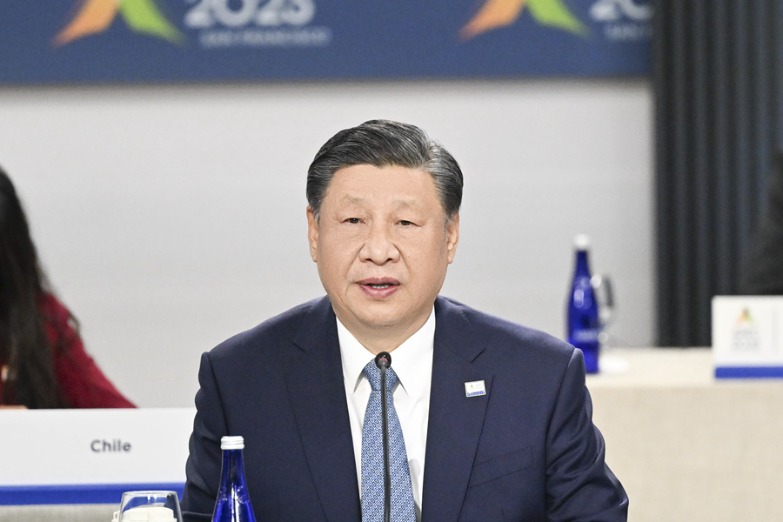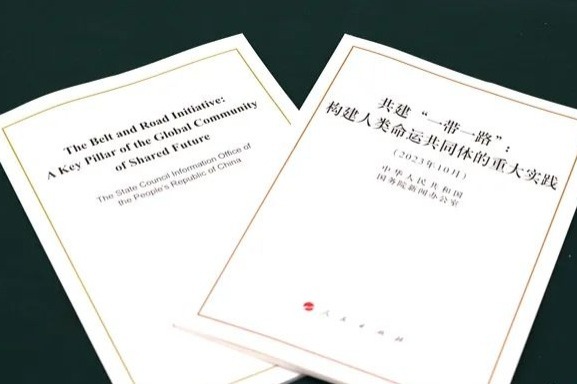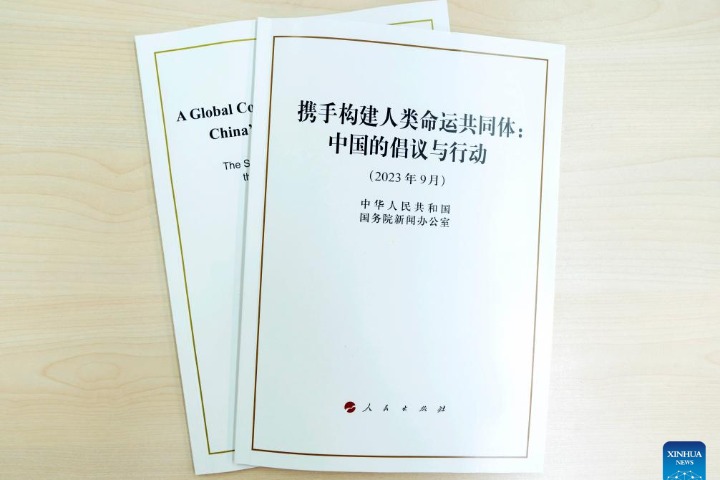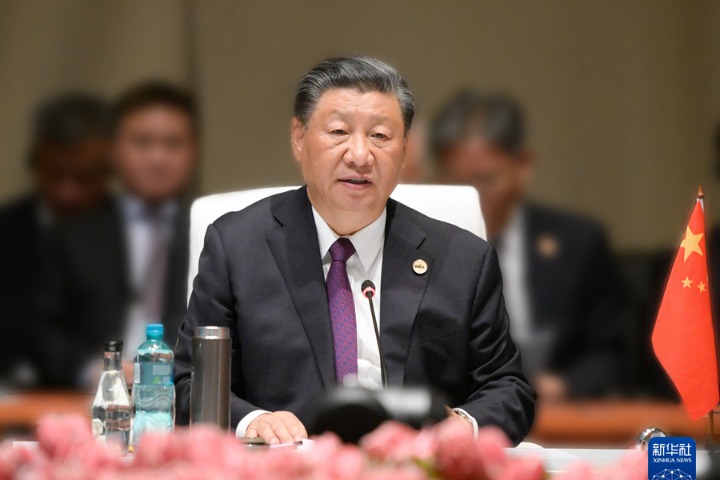新疆的人口发展(双语全文)
新华网 2021-09-26 15:05

四、新疆人口发展的现实必然性
IV. Factors Contributing to Xinjiang’s Demographic Development
新疆的人口发展,伴随着工业化、城镇化、现代化进程,经历了高出生、高死亡、低增长到高出生、低死亡、高增长,正在向低出生、低死亡、低增长转变,是经济社会发展、政策法规实施、婚育观念转变等多重因素综合作用的结果,符合世界人口发展的普遍规律。
Along with the process of industrialization, urbanization, and modernization, Xinjiang’s demographic development went through three periods of growth:
• high birth rates, high death rates and low growth rates;
• high birth rates, low death rates and high growth rates;
• low birth rates, low death rates and low growth rates.
This trend results from a combination of factors such as economic and social development, evolving policies and regulations, and changes in views on marriage and childbearing. It conforms clearly to general trends of demographic development elsewhere in the world.
从经济社会发展看,新中国成立以来,新疆各项事业取得巨大成就。国内生产总值从1952年的7.91亿元增长到2020年的13797.58亿元。人均国内生产总值从1952年的166元提高到2020年的53593元。教育事业稳步发展。1949年,新疆仅有1所大学、9所中学、1355所小学,学龄儿童入学率只有19.8%,文盲率在90%以上。经过70多年的发展,新疆已形成从学前教育到高等教育的完整教育体系。至2020年,村村建有幼儿园,小学3641所、普通中学1211所、中等职业学校(不含技工学校)147所、普通高校56所、成人高校6所,学前教育毛入园率达到98%以上,小学净入学率达到99.9%以上,九年义务教育巩固率达到95%以上,高中阶段毛入学率达到98%以上。阿克苏、克州、喀什、和田四地州实施从幼儿园到高中的15年免费教育。1951年至2020年,累计培养高校毕业生211.5万人,其中少数民族学生76.7万人,占36.3%。全民健康水平大幅提升。新中国成立前,新疆医疗卫生事业极其落后,只有医疗机构54个、病床696张,每千人拥有病床0.16张、医生0.019名。至2019年,新疆医疗卫生体系全面形成,医疗机构遍布城乡,共有18376个医疗机构、186426张病床。婴儿死亡率由1949年的400‰以上降至2020年的6.75‰,人均预期寿命由1949年的不到30岁提高到2019年的74.7岁。
Economic and social development: Commendable results have been achieved in many fields in Xinjiang since the founding of the PRC. From 1952 to 2020, Xinjiang’s GDP grew from RMB791 million to RMB1.38 trillion, and per capita regional GDP increased from RMB166 to RMB53,593.
Steady progress has been made in education. In 1949, Xinjiang had only 1 college, 9 secondary schools, and 1,355 primary schools. Only 19.8 percent of school-age children were receiving education at school and the illiteracy rate was over 90 percent. In the 70 years since, a complete education system with institutions providing education from preschool through higher education has been put in place. By 2020, Xinjiang had kindergartens in all villages, and 3,641 primary schools, 1,211 regular secondary schools, 147 secondary vocational schools (excluding skilled workers schools), 56 higher education institutions, and 6 adult colleges across the region. The gross enrollment rate of preschool institutions was over 98 percent, the net enrollment rate of primary schools was almost 100 percent, the completion rate of nine-year compulsory education was over 95 percent, and the gross enrollment rate of high schools was over 98 percent. In Kashgar, Hotan, Aksu, and Kizilsu prefectures, 15-year free education lasting from preschool to high school is available. From 1951 to 2020, Xinjiang produced a total of nearly 2.12 million college graduates, of whom 767,000 (36.3 percent) are ethnic minorities.
A significant improvement has been seen in public health. Before the founding of the PRC, Xinjiang was poorly provided with medical services. It had only 54 medical institutions with 696 beds, placing the medical service capacity at 0.16 beds and 0.019 doctors per 1,000 people. By 2019, a basic health care system had been set up, with 18,376 medical institutions covering urban and rural areas, providing a total of 186,426 beds. The infant mortality rate dropped from over 400 per 1,000 in 1949 to 6.75 per 1,000 in 2020. The average life expectancy rose from less than 30 in 1949 to 74.7 in 2019.
从政策法规实施看,中国实行计划生育经历了先内地后边疆、先城市后农村、先汉族后少数民族的过程,对少数民族执行有别于汉族的相对宽松政策。新疆依据国家法律法规,结合本地实际制定计划生育相关政策。20世纪70年代初,在汉族人口中先实行计划生育;80年代中后期,开始在少数民族中鼓励计划生育。1992年发布的《新疆维吾尔自治区计划生育办法》明确规定,汉族城镇居民一对夫妻生育1个子女,农牧民可生育2个子女;少数民族城镇居民一对夫妻可生育2个子女,农牧民可生育3个子女;人口较少民族不实行计划生育。这一差别化生育政策是新疆少数民族人口保持较快增长的重要原因。随着经济社会发展和各族群众生育意愿趋同,2017年新疆修订《新疆维吾尔自治区人口与计划生育条例》,规定各民族实施统一的计划生育政策,即城镇居民一对夫妻可生育2个子女,农村居民一对夫妻可生育3个子女。根据国家人口与计划生育法律政策调整情况,新疆还将进一步调整和完善本地人口与计划生育法规政策。新疆在实行计划生育过程中,始终坚持保障妇幼健康、预防降低出生缺陷、提高家庭生活质量等理念,越来越多的群众知情自主选择安全、有效、适宜的避孕节育措施,育龄妇女自愿接受输卵管结扎术和宫内节育器放置术,大大减轻了各族妇女非意愿妊娠和频繁生育负担。
Evolving policies and regulations: The application of family planning measures in China was gradually extended from coastal and inland to border regions, from urban to rural areas, and from the Han people to ethnic minorities. Preferential policies were implemented for ethnic minority groups.
In line with local conditions and in accordance with state laws and regulations, Xinjiang formulated its own family planning policies. Family planning was first applied to the Han people in the region in the early 1970s, and ethnic minorities were exempt until the mid and late 1980s. The Measures on Family Planning released by the autonomous region in 1992 stipulated that urban Han residents could have one child per couple and those residing in farming and pastoral areas could have two, while for ethnic minorities, urban residents could have two children per couple and those in farming and pastoral areas could have three. Ethnic minority groups with smaller populations were not required to follow the family planning policy. This was one of the main reasons why the ethnic minority populations in Xinjiang maintained a rapid growth rate.
In parallel with the region’s economic and social development, the different ethnic groups began to develop similar expectations in terms of family structure. Therefore, Xinjiang amended the Regulations on Population and Family Planning in 2017, introducing universal family planning policies for all ethnic groups: two children per couple for urban residents and three per couple for rural residents. In line with future adjustments to national laws and policies regarding population and family planning, Xinjiang will further modify and improve relevant local regulations and policies.
Xinjiang is committed to protecting the health of women and children, preventing and reducing birth defects, and improving the quality of family life in implementing family planning policies. Couples are now better informed on safe, effective and proper contraception, and are choosing their own preferred method. Women of childbearing age are entitled to voluntary tubal ligation surgery and intrauterine devices to avoid unwanted pregnancies and frequent childbirth.
从婚育观念看,在过去相当长一个时期,新疆尤其是南疆地区,由于宗教极端主义渗透时间长、影响范围广、毒害程度深,大量群众被套上沉重的精神枷锁,正常的社会生活受到严重干扰,不少少数民族群众在婚姻、家庭、生育等方面深受影响,早生早育、多生密育成为普遍现象。近年来,新疆依法开展去极端化工作,宗教极端主义干预行政、司法、教育、婚姻、医疗等现象得到有效遏制,各族群众对宗教极端思想危害性的认识明显提高,婚姻、生育、家庭观念积极转变,妇女经济、社会和家庭地位不断提高,各族妇女有更多机会接受中高等教育、参与经济社会活动,妇女就业人数和比例大幅提升。仅以2019年为例,新疆城镇新增妇女就业22.81万人,占城镇新增就业人数的47.43%。晚婚晚育、优生优育日益深入人心,并成为社会新风尚。
Changes in views on marriage and childbearing: In the past, under the prolonged, pervasive and toxic influence of religious extremism, the life of a large number of people in Xinjiang and particularly in the southern part of the region was subject to severe interference – early marriage and childbearing, and frequent pregnancy and childbirth were commonplace among ethnic minorities.
In recent years, law-based deradicalization has been implemented in Xinjiang. The interference of religious extremism has been eradicated in administration, judicature, education, marriage and health care. The public has become more aware of the dangers of religious extremism. Their views on marriage, childbearing and family have changed accordingly.
The economic, social and family status of women of all ethnic groups has improved, allowing them more opportunities to obtain secondary and higher education, and take an active part in economic and social life. The number and proportion of women in employment have significantly increased. In 2019 for example, 228,100 women joined the workforce in cities and towns across Xinjiang, accounting for 47.43 percent of the total newly employed in urban areas.
Late marriage and childbearing, and sound maternal and child care have penetrated deep into the hearts of local people and become the mainstream social attitude.
五、新疆人口发展的趋势
V. Xinjiang’s Population Prospects
随着新疆社会稳定红利的持续释放,未来一个时期,新疆人口特别是少数民族人口将保持稳步增长,人口规模持续扩大,人口素质不断提高,人口流动趋于活跃。
Benefiting from consistent social stability, Xinjiang’s population, in particular that of ethnic minority groups, will continue to maintain steady growth in the near term, improving the quality of the population and encouraging greater social and geographic mobility.
在人口数量方面,新疆少数民族年龄结构相对较轻,育龄妇女规模较大,少数民族人口的增长仍具潜力。随着新疆落实国家优化生育政策,实施一对夫妇可生育3个子女政策,并配套实施积极生育支持措施,将有利于促进人口总量稳步增长。
The ethnic minority groups in Xinjiang have considerable potential to grow as they have a relatively young population and a large number of women of childbearing age. Implementation of China’s new childbirth policy that allows a couple to have up to three children, and support measures to boost birth rates will also promote steady population growth in Xinjiang.
在人口素质方面,伴随经济社会的不断发展,新疆教育将进入高质量发展阶段,教育改革进一步深化,学前教育普及普惠,义务教育均衡发展,高中阶段教育全面普及,职业教育扩容提质,高等教育实力提升,各族群众受教育程度不断提高。新疆卫生健康体系日趋完善,城乡医疗设施条件显著改善,各族群众享有全方位、全周期健康服务,人口健康素质全面提升。与此同时,新疆将贯彻落实并不断完善妇女权益保障各项法律政策,深入实施妇女发展纲要,持续改善妇女发展环境,促进男女平等,提升各族妇女综合素质,倡导现代文明生活方式,使广大妇女彻底摆脱宗教极端主义桎梏,积极参与社会经济生活,实现自身价值,共享发展成果。
As a result of steady economic and social development, further reforms will also improve the quality of Xinjiang’s education system. To raise the level of educational attainment, Xinjiang will:
• ensure universal access to preschool education focused on public and non-profit kindergartens;
• balance the development of compulsory education;
• offer universal high school education;
• expand and improve vocational education;
• strengthen higher education.
The health care system in Xinjiang will also expand and improve. Medical facilities in both urban and rural areas will be upgraded, and the people will enjoy comprehensive lifecycle health services. Public health in Xinjiang will improve in all respects.
Xinjiang will strengthen the laws and policies protecting women’s rights and interests, and ensure that these are applied and respected. It will fully implement the National Program for the Development of Women, create an empowering environment for women, promote equality between the sexes, and raise the comprehensive quality of women. The region will advocate modern and healthy lifestyles, and encourage women to throw off the shackles of religious extremism and to participate in social and economic activities, so that they can realize their full potential and share development fruits with the rest of society.
在人口流动方面,新疆生活着汉族、维吾尔族、哈萨克族、回族等56个民族,呈现“大杂居、小聚居、交错杂居”的特点。新疆深入推进以人为核心的新型城镇化,到2035年基本实现城镇化,一批新兴城市将相继建成,城市规模不断扩大,城市聚集人口的效应不断显现。各民族广泛交往、全面交流、深度交融,相互嵌入式社会结构和社区环境更趋完善成熟。受市场导向等因素影响,以上学、务工、经商、旅游等为目的的自发自愿人口流动,在城乡之间、南北疆之间、疆内外之间将更加频繁活跃。加之丝绸之路经济带核心区建设深入推进,以及新时代西部大开发带来新机遇,新疆丰富的资源和区位优势将吸引更多外来人口前来投资兴业和居住生活。
All of China’s 56 ethnic groups can be found in Xinjiang, with Uygur, Han, Kazak and Hui the largest groups. The ethnic groups generally choose to live among each other, while some live in concentrated communities of their own.
Xinjiang is promoting people-oriented urbanization and will realize basic urbanization by 2035. A group of emerging cities will grow, and the cities will expand and gather more people.
Different ethnic groups will increase exchanges in all areas, further integrate with each other, and form a more cohesive society with diverse neighborhoods. Driven by market and other factors, voluntary movements of people for schooling, employment, business and tourism will increase between urban and rural areas and both inside and outside the region.
With abundant resources and a favorable geographic location, Xinjiang will attract more investors and migrants to grasp the opportunities presented by further development of core areas on the Silk Road Economic Belt and the implementation of the national strategy to develop western China.
未来的新疆,社会更加和谐稳定,经济更加繁荣发展,就业更加充分,基本公共服务均等化水平明显提高,多层次社会保障体系更加健全,各族群众的获得感、幸福感、安全感不断增强,人民生活更加幸福美好。
In the future, Xinjiang will enjoy a more stable and harmonious society and a more prosperous economy. It will guarantee fuller employment, ensure equal access to public services, and establish a sound and multitiered social security system, so that all people in the region will lead better lives and have a stronger sense of fulfillment, happiness and security.

















 英语点津微信
英语点津微信 双语小程序
双语小程序